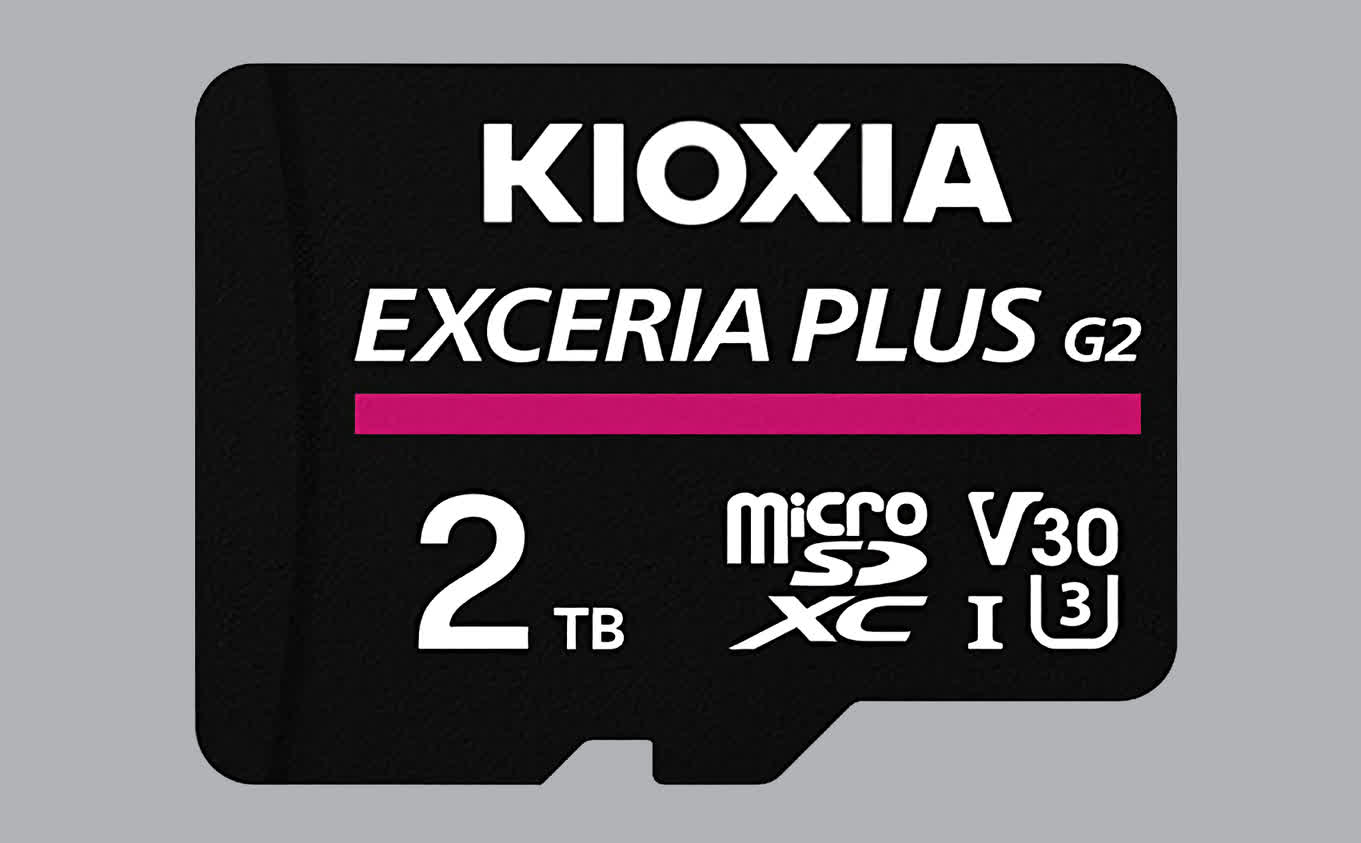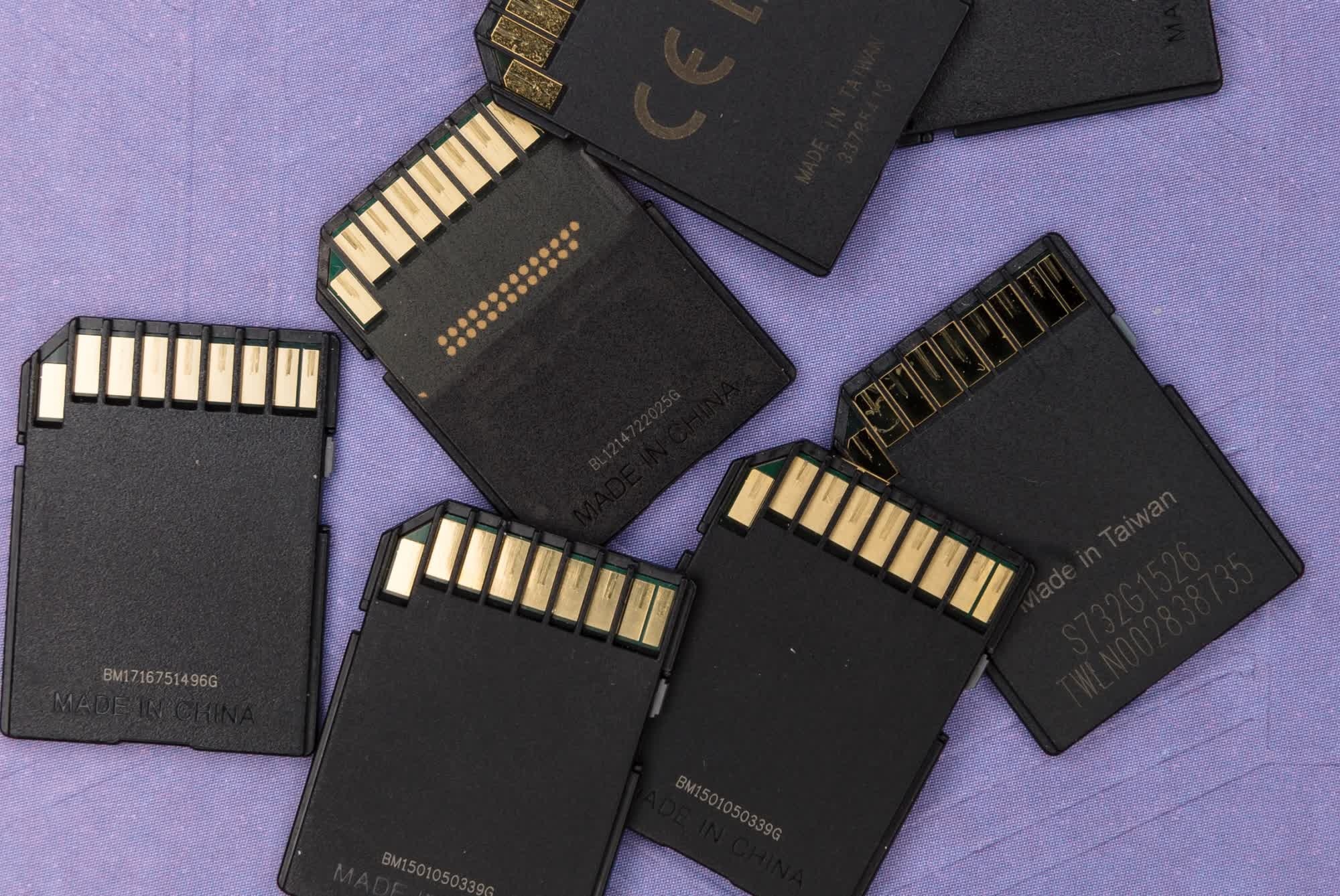Forward-looking: Kioxia has finally started mass production of its 2 TB microSDXC memory card, more than a year after the memory maker showed off a functional prototype. The card, formally known as the Kioxia Exceria Plus G2, is said to leverage proprietary manufacturing tech including its BiCS Flash 3D flash memory as well as a controller designed in-house.

To stay within the specification's maximum thickness of 0.8 mm, Kioxia had to stack 16 one-terabit dies of 3D flash memory.
The card is rated for read speeds of up to 100 MB/s and writes up to 90 MB/s, adhering to UHS Speed Class 3 (U3) and Video Speed Class 30 (V30) ratings. The 2 TB capacity will allow the card to store more than 41 hours of 100 Mbps video, we're told.
It is worth noting that the SDXC spec has supported cards up to 2 TB for more than a decade but nobody has been able to manufacture them successfully. Kioxia's delay in getting its prototype to mass production highlights the challenge.

The demand for an ultra high-capacity memory card has never been greater. Smartphones and action cameras are turning out increasingly larger files, and fewer physical games being shipped means portable consoles are having to rely more on hefty digital downloads.
Kioxia said it expects to launch the Exceria Plus G2 card in the coming quarter but stopped short of mentioning how much it will cost. High capacity devices usually don't come cheap; depending on how Kioxia prices the card, it could very well be cheaper to purchase two 1 TB drives instead of a single 2 TB. There is a convenience fee of course, but if the price difference is big enough, some might elect to take the cheaper route.
For reference, a SanDisk 1.5 TB microSDXC card commands around $150 while an Amazon Basics 1 TB card will set you back $100. If you don't need that much storage, a 500 GB card from Samsung can be yours for around $25.
Image credit: Markus Winkler
https://www.techspot.com/news/101284-kioxia-2-tb-microsdxc-memory-card-finally-enters.html